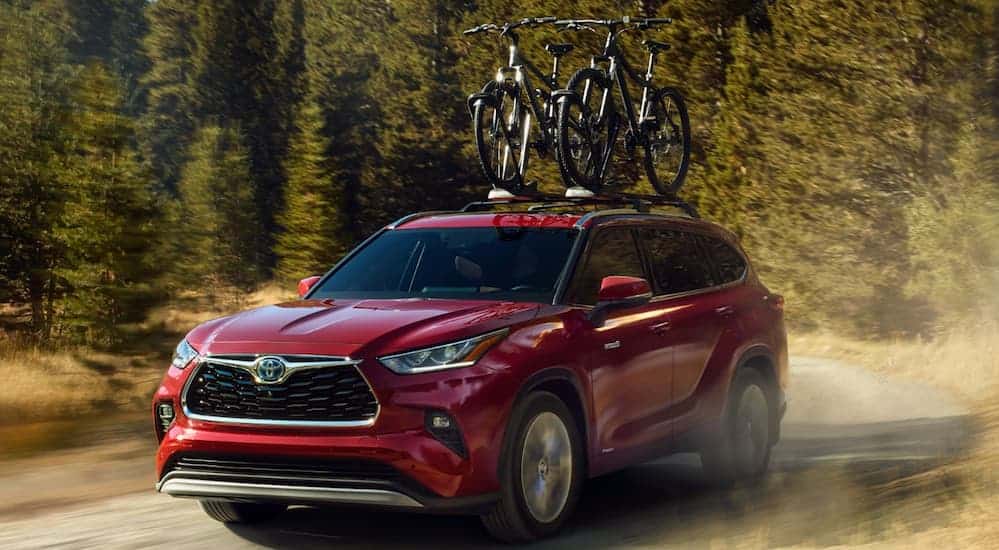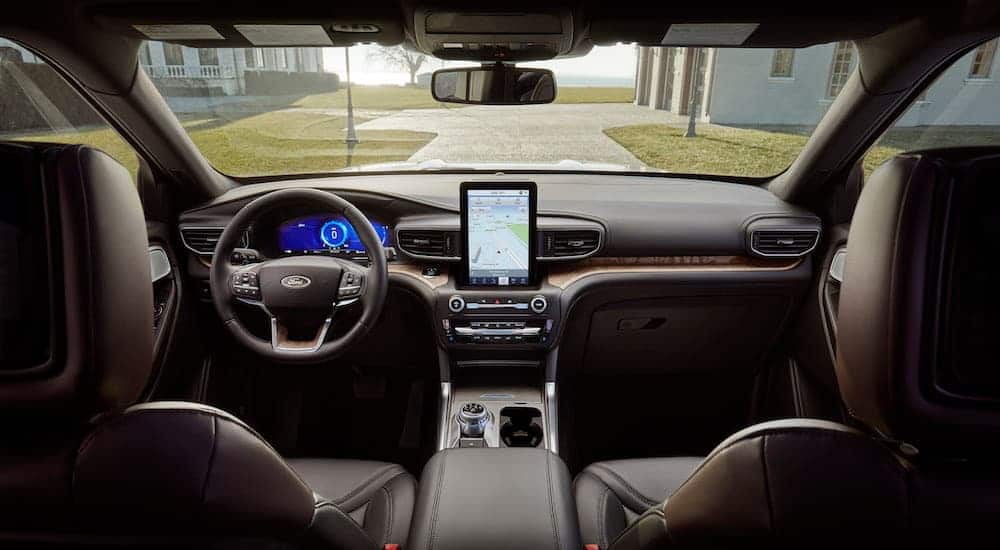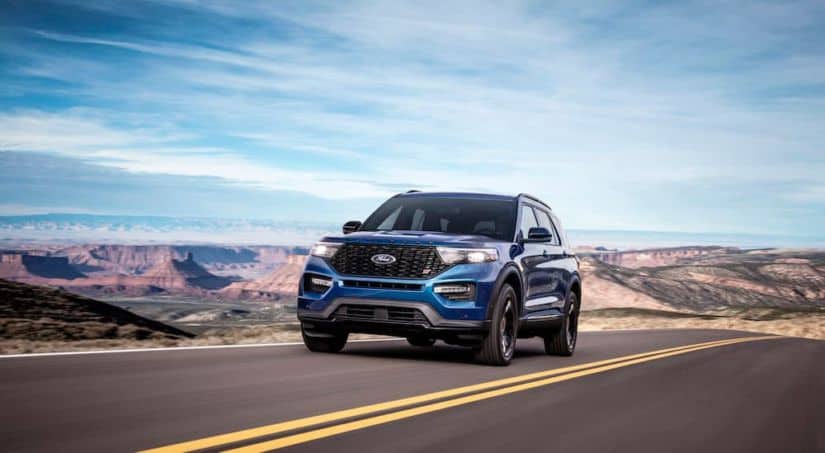With so many SUVs on the market nowadays, it can be easy to get lost in the noise, particularly if you’re a compact SUV. That said, there are plenty of models out there still breaking the mold, providing some pretty stellar engines, safety features, and onboard tech to provide a driving experience that is simply remarkable in its own right. Two vehicles that certainly attempt to fit this image of a ‘breakout SUV’ are the 2020 Ford Explorer vs 2020 Toyota Highlander. These are two midsize SUVs that offer a pretty solid ride, no matter how you spin it, however, one is definitely superior to the other. Ford and Toyota both promise to bring plenty to the table, but we’ll have to dig a little deeper to see who has the bigger bounty. From powertrain options to the level of interior comforts available for both front and rear passengers, we’ll unpack what makes each of these SUVs tick to see which is the superior choice.
Presentation Matters
A big thing for SUV drivers is having a healthy amount of configuration options. Far too often, automakers streamline their offerings, which results in very little room for customization. Fortunately, neither the Toyota Highlander or the Ford Explorer fall into this trap of limited options. The Toyota Highlander can be purchased in either the L, LE, XLE, Limited, and Platinum trims. Meanwhile, the Ford Explorer is available in the base, XLT, Limited, ST, and Platinum trim configurations. In a refreshing change of pace, both the Toyota Highlander and the Ford Explorer offer hybrid powertrains in their lineup, making for more fuel-efficient versions of these two sizable SUVs.
That said, when we reach the subject of price, Toyota makes its first misstep. The base model of the Toyota Highlander runs for a lofty $34,600 MSRP, which isn’t terrible, but when the Ford Explorer starts at a middling $36,675 MSRP, it’s clear that there is a huge disparity between these two SUVs. Now, Toyota could justify this higher price with some outlier features or performance, but we’ll have to dig a little deeper to uncover the details.

Mid-Sized Power for a Midsize SUV
While both of these midsize SUVs sport hybrid powertrains, we’ll focus on the gas-fueled engines for the sake of consistency. That being said, we have to give both Ford and Toyota bonus points for being more future-forward with their vehicles, as many competitors still fail to offer hybrid powertrains in their mid or even compact SUVs.
Starting with the Toyota Highlander, the base model sports a 3.5-liter V6 engine that makes 295 horsepower and 263 lb-ft worth of torque, which isn’t half-bad, but considering the engine’s size, we’d expect a bit more oomph. This V6 engine can be paired with either front-wheel drive or all-wheel drive and comes standard with an 8-speed automatic transmission. The V6 engine is also rated to tow a maximum of 5,000 pounds, which, once again, isn’t bad. The Toyota Highlander rides on either a set of 18 or 20-inch wheels, which makes for some pretty smooth riding all around. That said, we’d have liked to see a bit more muscle behind the Toyota Highlander, as the hybrid option doesn’t offer more horsepower or torque to the mix.
The Ford Explorer, on the other hand, offers a pretty solid spread of power, ranging from the turbocharged base engine to a commanding V6 that provides the kind of performance one should be able to expect out of a Ford SUV.
The 2020 Ford Explorer’s starting engine is a 2.3-liter turbocharged four-cylinder that puts out 300 horsepower and 310 lb-ft of torque, outpacing the Toyota Highlander by a long-shot. Operating on a 10-speed automatic transmission performance in even the entry-level engine is pretty incredible, and things don’t stop there.
Move up to the Platinum trim level, and you’ll find yourself at the helm of a 3.0-liter turbocharged V6 that has no issue thrumming out 365 horsepower and 380 lb-ft worth of torque. Even with a big V6 engine, fuel economy is far greater than expected thanks to the stop/start system, which cuts the engine when the vehicle is stopped to save gas. The Ford Explorer is also pretty versatile with the option of shifting drive modes depending on the occasion between Normal, Sport, Trail, Slippery, Tow/Haul, and Eco.
If you decide to invest in the four-wheel drive model, you’ll get added capability as well as two additional drive modes: Sand and Snow. The Ford Explorer ST trim pushes the envelope even further by finding forward power through a performance tweaked version of the V6 engine, which boosts things to 400 horsepower and 415 lb-ft of torque.
All totaled, the Ford Explorer is easily the better performer with a variety of engine builds to take advantage of. That said, horsepower and torque specs aren’t the only way to rate an SUV, and fortunately, the Toyota Highlander makes up for some of its performance misgivings in other areas.

The Interior Experience
Both of these SUVs are well-sized with expansive interiors that provide plenty in the way of room and comfort. The Toyota Highlander sports three-rows of seating, and when all three rows are folded, up to 84.3 cubic feet of cargo space can be found. Additional features make the baseline Toyota Highlander a thrill to drive, including features like keyless ignition, three-zone climate control, a power-controlled driver’s seat, and an 8.0-inch infotainment screen that is integrated with Apple CarPlay and Android Auto. Something that Toyota does a good job of is including a healthy supply of safety features, which include things like automatic emergency braking, adaptive cruise control, and lane-departure warnings, all at no additional cost to the buyer.
On the subject of safety, the Ford Explorer also offers plenty in the way of active safety with Ford’s Co-Pilot360 package included on all trim levels. This safety package includes features like blind-spot monitors, automatic emergency braking, and cross-traffic alerts. The Ford Explorer is no small fry either when it comes to spacing, with three rows of seating and up to 87.8 cubic feet of cargo space to utilize. And much like the Toyota Highlander, the Ford Explorer comes with additional infotainment features such as an 8.0-inch infotainment display and a power liftgate.
So, when you focus on the interior experience, the Ford Explorer and the Toyota Highlander run neck and neck, but like before, the Ford Explorer still pulls out ahead.
Our Choice for Best Midsize SUV
There’s no denying it, both the Ford Explorer and the Toyota Highlander are great cars, offering far more value than competitors, putting them ahead of the pack. But if you take a hard look at the specs, and what each SUV brings to the table, it is the Ford Explorer that outpaces the competition. With its diverse array of powertrains to the full package of safety features packed inside each model, the Ford Explorer is the clear winner in terms of midsize SUVs. And if you want to see for yourself why we chose the Ford Explorer as our SUV of choice, we urge you to visit your local Ford dealership to see for yourself just what the Ford Explorer can do on the pavement.



